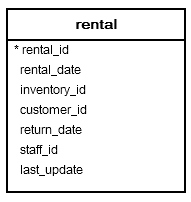PostgreSQL DATE_TRUNC() Function
Summary: This tutorial shows you how to use the PostgreSQL DATE_TRUNC() function to truncate a timestamp or interval to a specified precision.
Introduction to the PostgreSQL DATE_TRUNC() function
The DATE_TRUNC() function truncates a TIMESTAMP, a TIMESTAMP WITH TIME ZONE, or an INTERVAL value to a specified precision.
Here’s the basic syntax of the DATE_TRUNC function:
DATE_TRUNC(field, source [,time_zone])In this syntax:
source
source is a value or an expression of type timestamp, timestamp with time zone, or interval. If you use a value of the date or time type, the function will cast it automatically to timestamp or interval respectively.
field
field specifies the to which precision to truncate the source.
Here are the valid values for the field:
- millennium
- century
- decade
- year
- quarter
- month
- week
- day
- hour
- minute
- second
- milliseconds
- microseconds
time_zone
time_zone specifies the time zone in which the function will perform the truncation. The time_zone argument is the default.
If you omit the time_zone, the function will truncate the source based on the current time zone setting.
The DATE_TRUNC function returns a TIMESTAMP or an INTERVAL value.
PostgreSQL DATE_TRUNC() function examples
Let’s explore some examples of using the DATE_TRUNC() function.
1) Basic PostgreSQL DATE_TRUNC() function example
The following example uses the DATE_TRUNC() function to truncate a TIMESTAMP value to hour part:
SELECT DATE_TRUNC('hour', TIMESTAMP '2017-03-17 02:09:30');Output:
date_trunc
---------------------
2017-03-17 02:00:00
(1 row)In this example, the DATE_TRUNC() function returns a timestamp with the hour precision.
If you want to truncate a TIMESTAMP value to a minute, you use the 'minute' field as shown in the following example:
SELECT DATE_TRUNC('minute', TIMESTAMP '2017-03-17 02:09:30');The function returns a TIMESTAMP with the precision is minute:
date_trunc
---------------------
2017-03-17 02:09:00
(1 row)2) Using PostgreSQL DATE_TRUNC() function with table data
See the following rental table in the sample database:
 The following example uses the
The following example uses the DATE_TRUNC() function to retrieve the number of rentals by month from the rental table:
SELECT
DATE_TRUNC('month', rental_date) m,
COUNT (rental_id)
FROM
rental
GROUP BY
m
ORDER BY
m;Output:
m | count
---------------------+-------
2005-05-01 00:00:00 | 1156
2005-06-01 00:00:00 | 2311
2005-07-01 00:00:00 | 6709
2005-08-01 00:00:00 | 5686
2006-02-01 00:00:00 | 182
(5 rows)This query retrieves the month of each rental date and counts the number of rentals each month from the rental table. It then groups the counts by month and sorts the result set by month.
If you want to count the rentals by week, you can pass the week to the DATE_TRUNC() function as follows:
SELECT
DATE_TRUNC('week', rental_date) week,
COUNT (rental_id)
FROM
rental
GROUP BY
week
ORDER BY
week;Output:
week | count
---------------------+-------
2005-05-23 00:00:00 | 835
2005-05-30 00:00:00 | 321
2005-06-13 00:00:00 | 1705
2005-06-20 00:00:00 | 606
2005-07-04 00:00:00 | 2497
2005-07-11 00:00:00 | 956
2005-07-25 00:00:00 | 3256
2005-08-01 00:00:00 | 1314
2005-08-15 00:00:00 | 3148
2005-08-22 00:00:00 | 1224
2006-02-13 00:00:00 | 182
(11 rows)The following example uses the DATE_TRUNC() function to count the number of rentals by staff per year:
SELECT
staff_id,
date_trunc('year', rental_date) y,
COUNT (rental_id) rental
FROM
rental
GROUP BY
staff_id, y
ORDER BY
staff_id;Output:
staff_id | y | rental
----------+---------------------+--------
1 | 2006-01-01 00:00:00 | 85
1 | 2005-01-01 00:00:00 | 7955
2 | 2006-01-01 00:00:00 | 97
2 | 2005-01-01 00:00:00 | 7907
(4 rows)Summary
- Use the PostgreSQL
DATE_TRUNCfunction to truncate a timestamp or an interval value to a specified level of precision